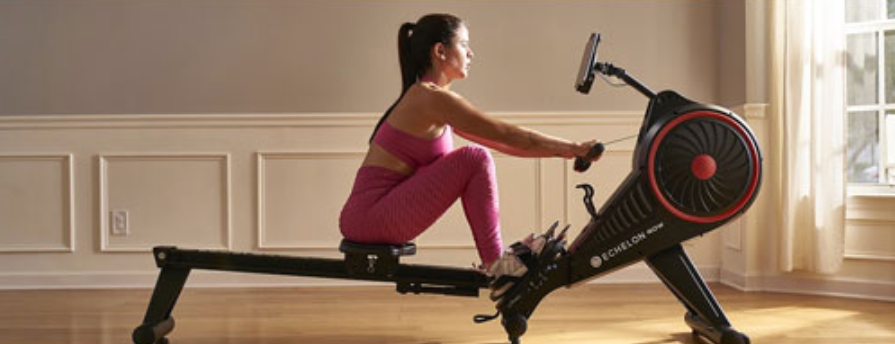
When it comes to exercise and setting up a home gym, a rowing machine is rarely the first piece of equipment on the radar. But there are plenty of good reasons for considering a rowing machine. Contrary to popular belief, they don’t just work your arm muscles but actually provide a low-impact, full-body workout, which makes them useful for just about anywhere, whether your goal is to lose weight, tone, or build muscle.
The latest rowing machines add high-tech smart integration so you can connect your phone to listen to music through built-in speakers, or even access and sync the machine with a virtual class using a built-in or mounted tablet or touchscreen. These versatile pieces of exercise equipment don’t get the credit they deserve, as there are a lot of unrealized benefits of rowing machines.
Table of contents
- What are rowing machines?
- Why would you use a rowing machine?
- Types of rowing machines
- What to consider when choosing a rowing machine?
- What are some related accessories worth getting to use with a rower?
What are rowing machines?

Just like a treadmill, exercise bike, or elliptical, a rowing machine, also called an indoor rower or ergometer, is designed to help you exercise, build muscle and endurance, and work towards a healthier lifestyle while remaining stationary, in one spot. Designed to simulate the action of watercraft rowing indoors, the earliest concept for a rowing machine dates all the way back to the 1800s.
The machine is long and low to the ground, consisting of a track with a flywheel and footrests at one end, a seat at the other end, and a chain or strap connecting the two. Sit on the seat and as you move back and forth in a rowing motion, the seat, and sometimes the footrests, move along with your strokes. To use it correctly, push with your legs first, then lean back pulling your abdominal muscles tightly and your arms back towards you for each stroke, then continue repeating this motion for the duration of the exercise. With adjustable resistance levels, you can work out to your ability, whether you’re just starting out or you’re an expert. The idea is to provide the same type of resistance you might get from water when rowing a real boat.
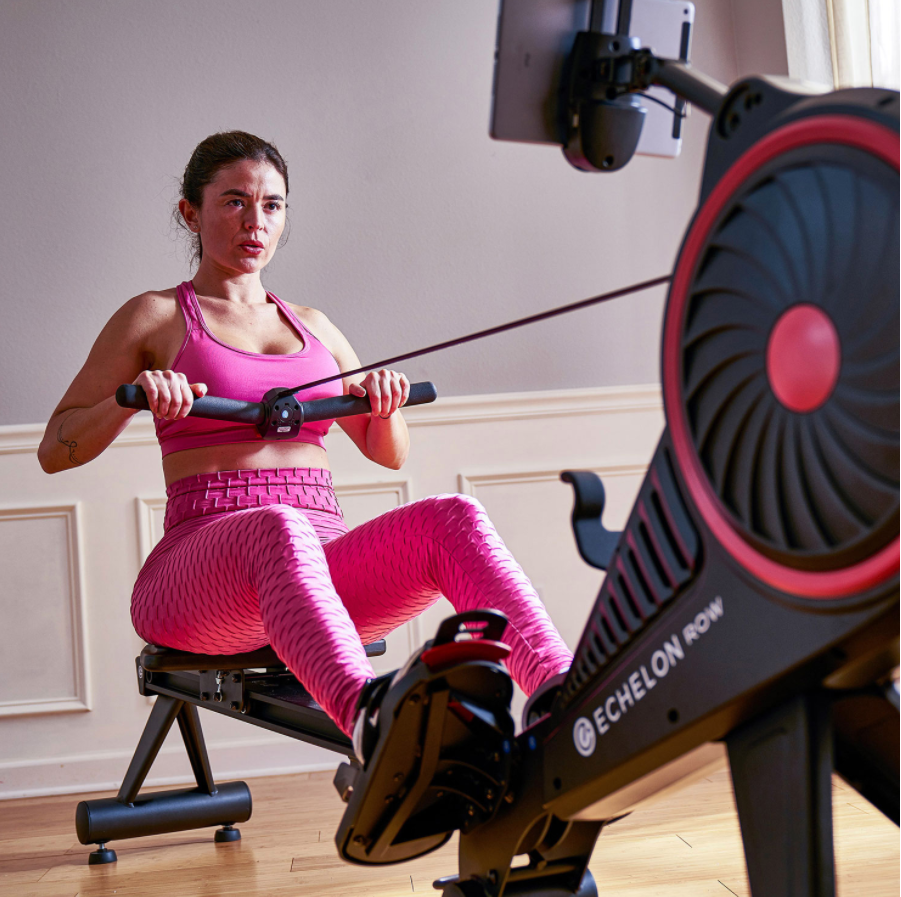
A rowing machine, as noted, provides the benefits of a full-body cardio workout, targeting a variety of muscles. You can keep track of stats, sometimes via measurements on the machine itself, including how long it takes you for each row, total distance traveled, calories burned, and more. And with the latest connected models, an app, and screen, you can receive motivation, encouragement, pacing, and guidance through a live or on-demand class.
Why would you use a rowing machine?
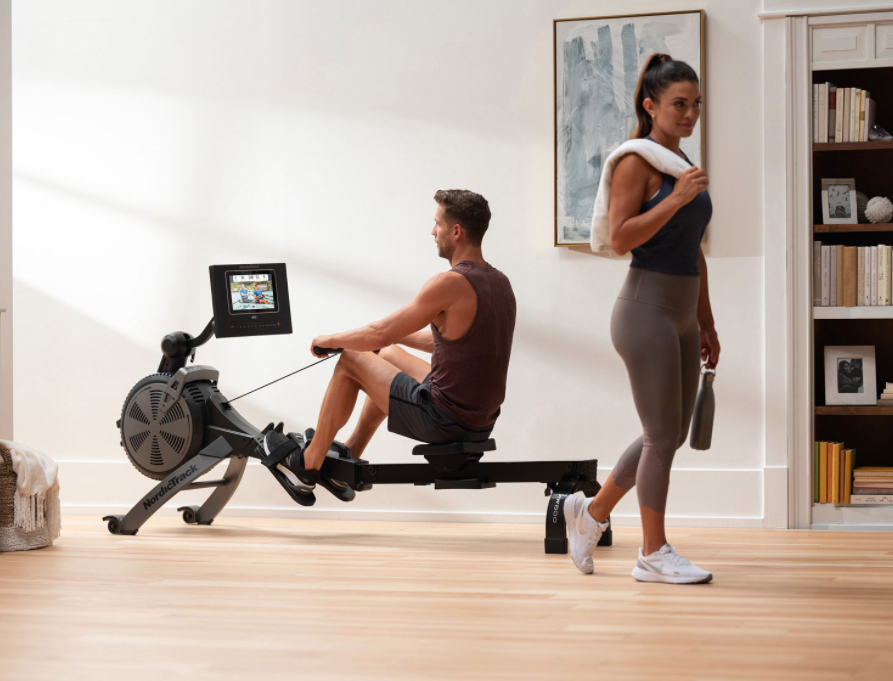
A common misconception about rowing machines is that they only work your arms, but this couldn’t be further from the truth. Rowing machines target a variety of muscles and parts of the body, including the upper back, pecs, arms, calves, quads, glutes, abs, and obliques. Rowing machines also help you build strength and endurance, tone muscles, burn calories, and can even be beneficial for your heart and lungs.
Rowing machines are preferred by some over other methods of indoor cardio because they offer a low-impact workout that burns calories in a safe and effective way without putting undue stress on joints. The exercise can also be quite calming, and releases endorphins, which generally make you feel good. Plus, they can be more affordable and more compact than larger pieces of equipment, like stationary bikes. Some of them can even be folded and neatly tucked away in a closet when you aren’t using them.
To get the most out of a rower, it’s recommended to do a 20-40-minute workout session each time, aiming at improving form, speed, calorie burn, and endurance.
Types of rowing machines
While the principles of how a rowing machine works are universal, there are four main types of rowing machines in terms of how they are designed to work: air, magnetic, water/fluid, and hydraulic.
Air rowing machines
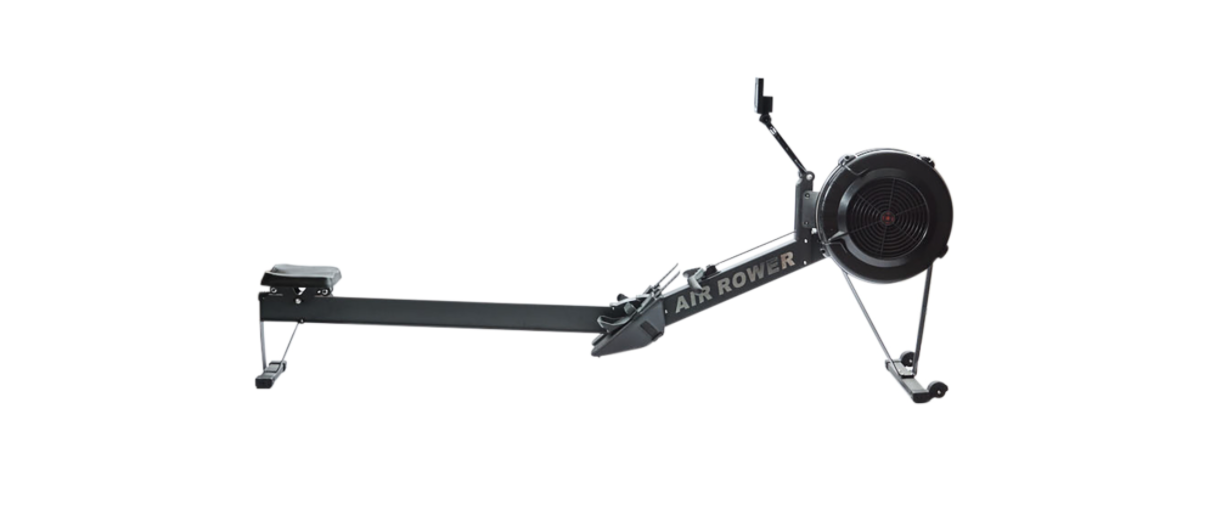
These rowing machines, also known as ergometers or ergos (referencing how they test the exertion level of muscles and measure cardio while you remain stationary), work using an opposing force that provides resistance so you can effectively work your muscles. Air flows over an internal flywheel, which is connected to a handle through a chain or strap. Every time you pull using the machine, the flywheel spins. The faster you go, the faster the flywheel spins, and thus the more resistance you get. Air rowing machines are fairly common and popular because they tend to be smooth, durable, and offer the best replication of the feeling of truly rowing on water. However, they can be noisy.
Water rowing machines
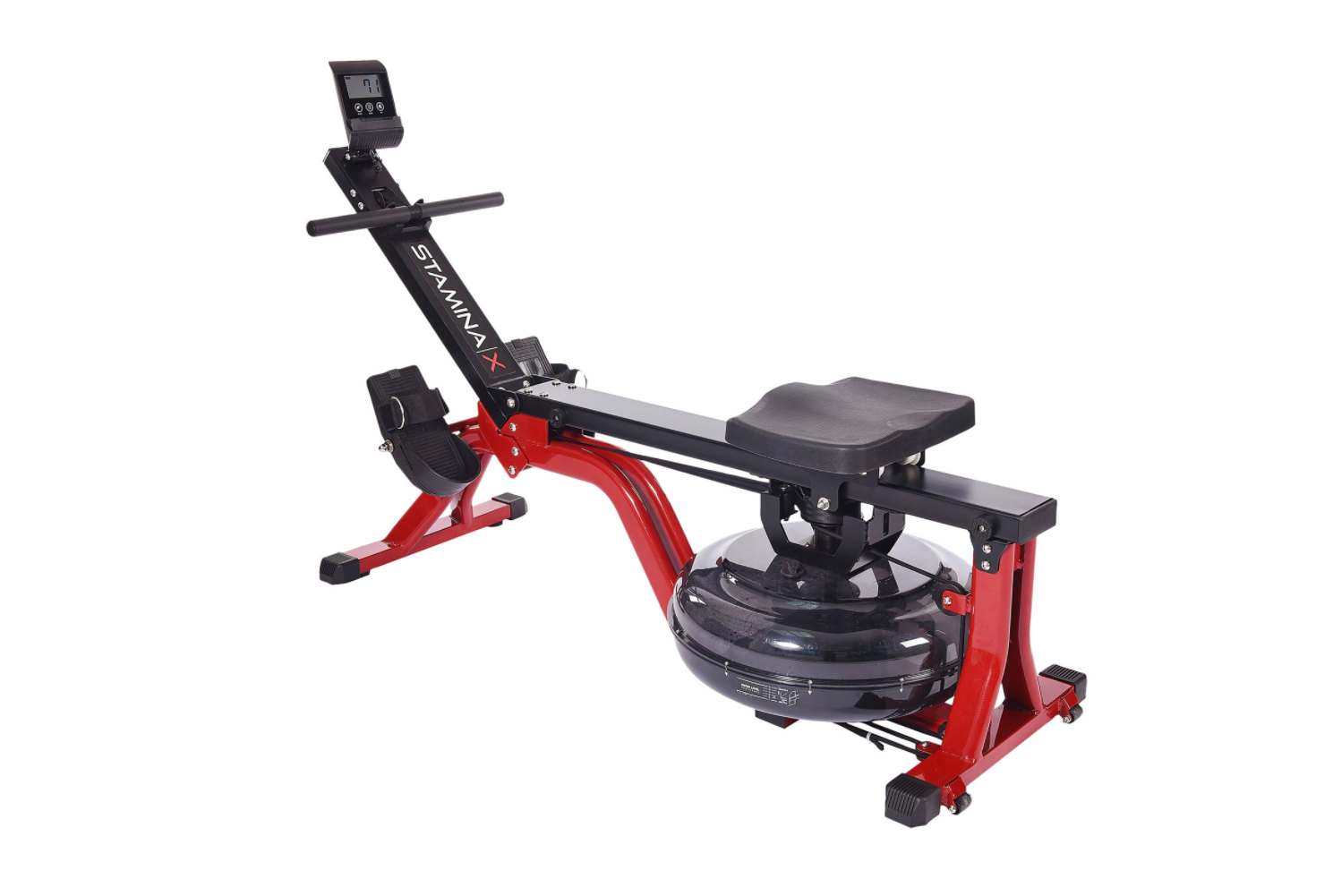
One of the newer versions in this space, water rowing machines use actual water and paddles to create resistance, which means there’s a bit more involved in setting one up, including filling a tank of water that is then connected to a chain and the handles, and changing water as needed. But they have the advantage of being quieter than air rowers, as well as providing a satisfying water “whooshing” sound when you row. It’s the same concept as with an air rowing machine but as you pull, the paddles move in the water, creating resistance. These do tend to be more expensive, however, as well as larger.
Magnetic rowing machine
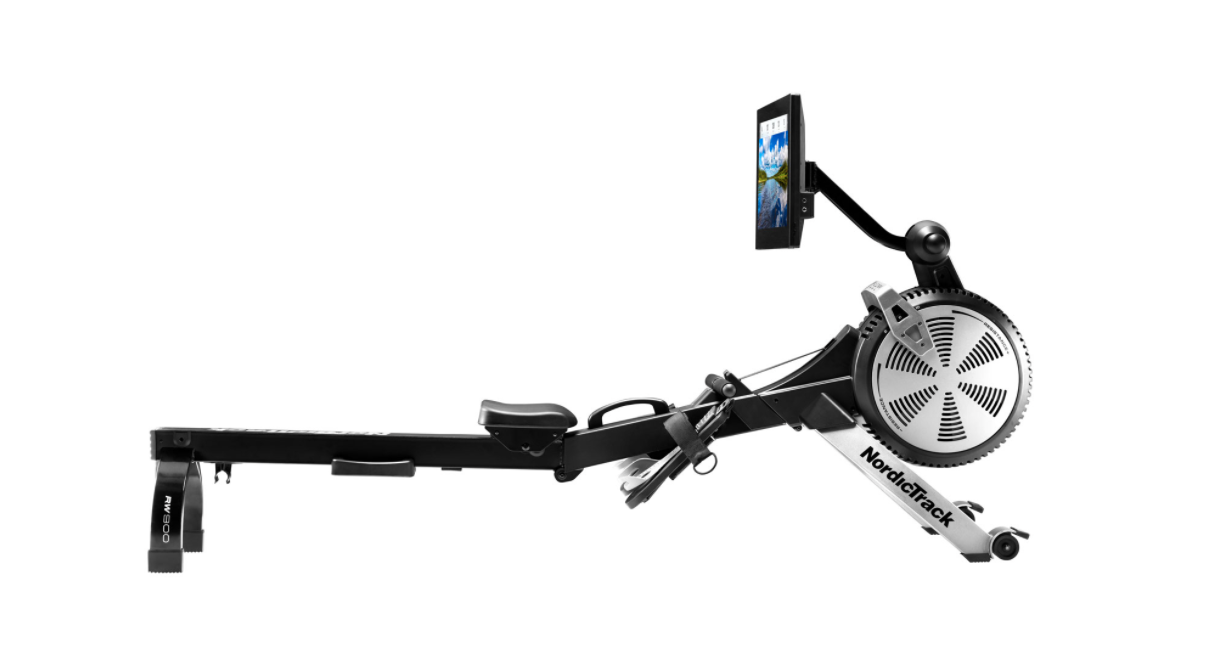
Another popular type of rowers, these tend to be much quieter than air rowing machines, and are also generally the most compact of the bunch. Magnetic rowers work using two strong magnets and a flywheel that spins, again, attached to the handle via chain. You won’t feel like you’re rowing on the water as you might with the other types. But if that doesn’t matter, magnetic rowers are one of the most compact, quietest, and smoothest options you can get: since the magnets never actually come in contact with the flywheel, there’s no noise.
Hydraulic rowing machine
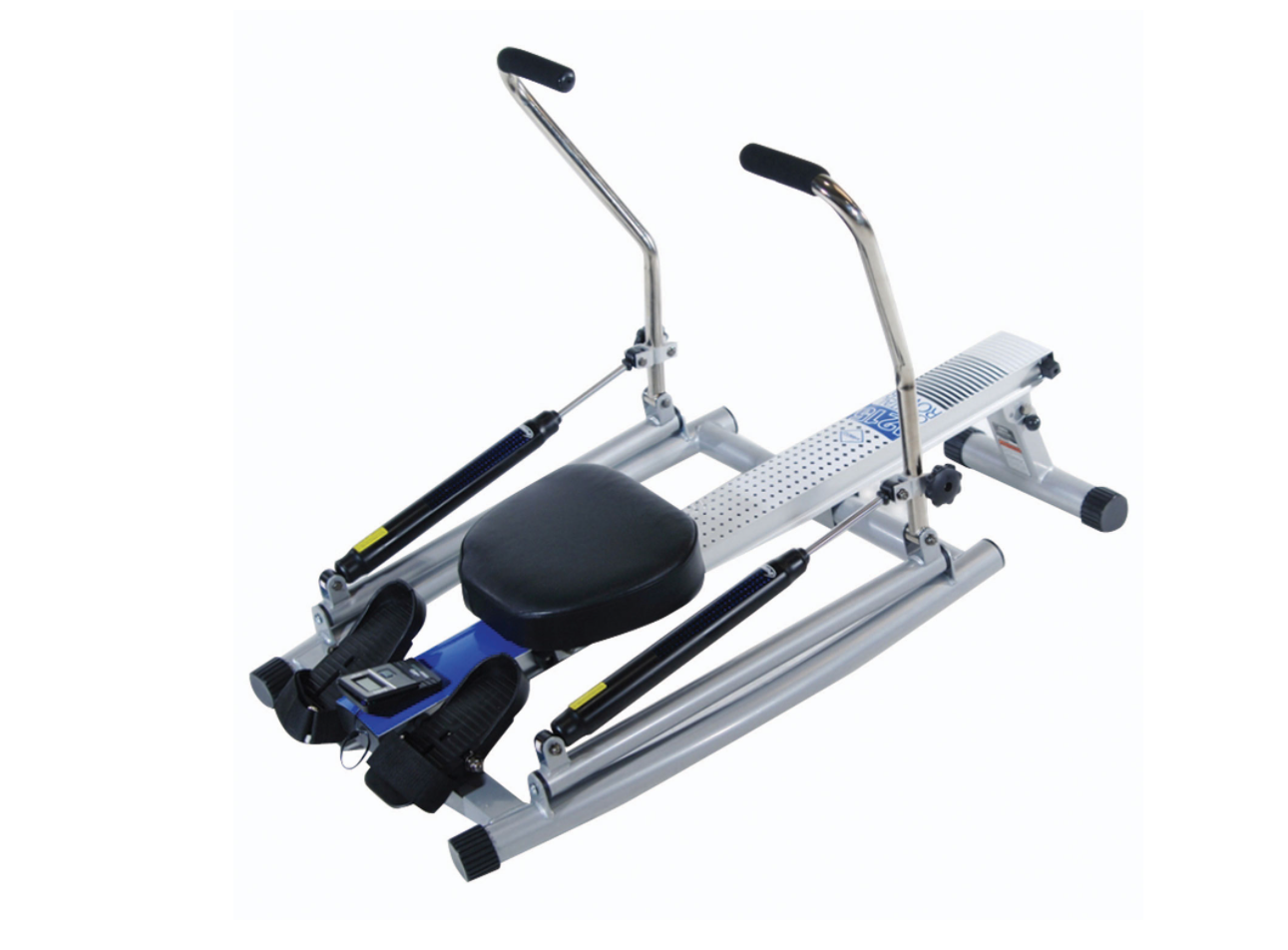
The most affordable of the bunch, hydraulic rowing machines are also small and quiet, but they use pistons for the resistance, which some say don’t provide the same smooth ride as you would get with a machine that uses a flywheel. With the pistons on the handle, pull against the air, adjusting the level of resistance using levels or clamps. You’ll save money, but for the smoothest, most comfortable ride and no-maintenance machine, you’re best to opt for one of the other types.
What to consider when choosing a rowing machine
Now that you fully understand the benefits and types of rowing machines, it’s time to discuss how to choose the right one. Even the most compact rowing machines are large pieces of equipment, and it’s a relatively big investment. So, you’ll want to go through a checklist to ensure you’re choosing the correct one to meet your needs.
Available space and compact design
The first major consideration before choosing the right rower for your home is space. If you have a dedicated workout room or area of your home (even the garage will do!) that’s great. But even if you don’t, you can still find a spot for a rowing machine.
Upright
An upright rower will take up much less room, ideal if you have limited space to set one up. You won’t require as much width, just height. And you can still get a similar kind of workout with an upright rower as you can with a traditional one, focusing more so on your shoulders and upper back, however, as you pull upwards versus towards you.
Foldable
Perhaps a better solution if you want a traditional rower versus upright is to opt for a foldable model so you can pack it up and put it away if you need to use the space in the room for other tasks and purposes.
Both
You could also consider a rower that is both upright and foldable, so it takes up less room both when in use and when packed away.
Foldability and compact design
Look for a compact option, and ideally one that folds up easily to be put away if it isn’t going to find a permanent spot in a home gym. Some fold up compactly for storing away in a closet or even just in the corner of the room. Some rowing machines have built-in wheels that make it easy to move from room to room, which can come in handy if you’re the type of person who likes to exercise where you can, when you can. You might want to plop it in front of the living room TV to get some rowing action in while watching the evening news but then move it to the basement for an early morning workout so you don’t wake up the family with the noise.
Important dimensions to note before purchasing the machine
To ensure that the design is compact enough to fit in your space, it’s critical to note the length, width, and height of the machine you choose. Make sure that when the machine is full-sized, you have enough clearance not just for the machine, but for you to comfortably move back and forth without hitting anything on the sides or behind you.
Resistance levels
Rowing machines are available with a variety of resistance levels, each offering increasing difficulty. You’ll find ones with as few as eight resistance levels to others with as many as 26. If you’re looking to exercise progressively, and want to push yourself, you may want to opt for one that has more resistance level options so you always have a way to challenge yourself and can move up incrementally as you improve. This is especially the case if you are already doing a workout regimen and have built up some endurance and strength. If you’re generally fit and strong already, you may bypass the first few resistance levels from the get-go, and want to be able to adjust the work as needed. If you find you’ll want to adjust the resistance on the fly, some models have a resistance toggle right on the handlebars, making this simple and effortless.
Budget
Price could be a deciding factor, but it’s important to ensure that you balance price with quality and value. With rowing machines often going on sale, you should be able to find the right fit for the right price. With that said, you don’t want to buy a subpar machine to try it out only to realize you should have invested in something more feature-rich. Ideally, find a local gym or rec center to try out a rowing machine and get a feel for it so you know what features and qualities make a difference to you, then weigh those against cost.
Comfort
A rowing machine has to be comfortable, seeing as you’ll be sitting on it for an entire workout. A padded seat can help along with durable and adjustable straps to accommodate your height and textured footplates for good traction along with adjustable foot straps for a secure hold. You can also find ones with a foam rowing handle for added comfort. Some machines have oversized seat rail glides and pivoting footplates that afford a larger range of motion. A nice convenience feature is a built-in phone or water bottle holder so you can keep either nearby for quick and easy access as needed.
Maximum weight capacity
Note the weight capacity of the machine as well: while you can find some rowers that can accommodate individuals up to about 300 lbs., many accommodate up to about 220 lbs. If you are a heavier person, you will want to verify that the machine can accommodate your body. This may lead to the need for a heavier machine, so you should also confirm that your floor can handle the weight of the machine, particularly for those who live in apartments.
The purpose for using it
Perhaps you’re considering buying a rowing machine for a commercial gym, not your home. In this case, a machine that is ultra-durable and easy to clean will be of utmost importance, over and above compact design and comfort. In a gym set-up, even a home gym, chances are that you won’t be moving it around. This means a heavier and larger model might suit you just fine.
Sound level
As noted, magnetic rowing machines are among the quietest types, so if you have a baby at home, light sleepers in the family, you live in an apartment, or you like to exercise in the early morning or late-night hours, the sound level could be a deciding factor between a magnetic and an air rowing machine, and might even convince you to go with a water one. The Silent Magnetic Resistance (SMR) in magnetic rowing machines and the quiet operation of water ones means they won’t disturb others in the house (or the apartment below) while you work out. To protect your floors and reduce sound and vibrations, don’t forget to purchase a mat to go under the machine.
Additional features
Some rowers have small displays that show your stats as you workout, including the number of reps and calories burned. Some can even track your heart rate and display that in real time so you know when you reach peak levels and can stop before over-exerting yourself. There are also rowers that can be used for other exercises as well, like strength training, cardio, barre, physical therapy, and pilates. It usually involves adjusting the straps or adding secondary ones for standing-based exercises.
Connected features
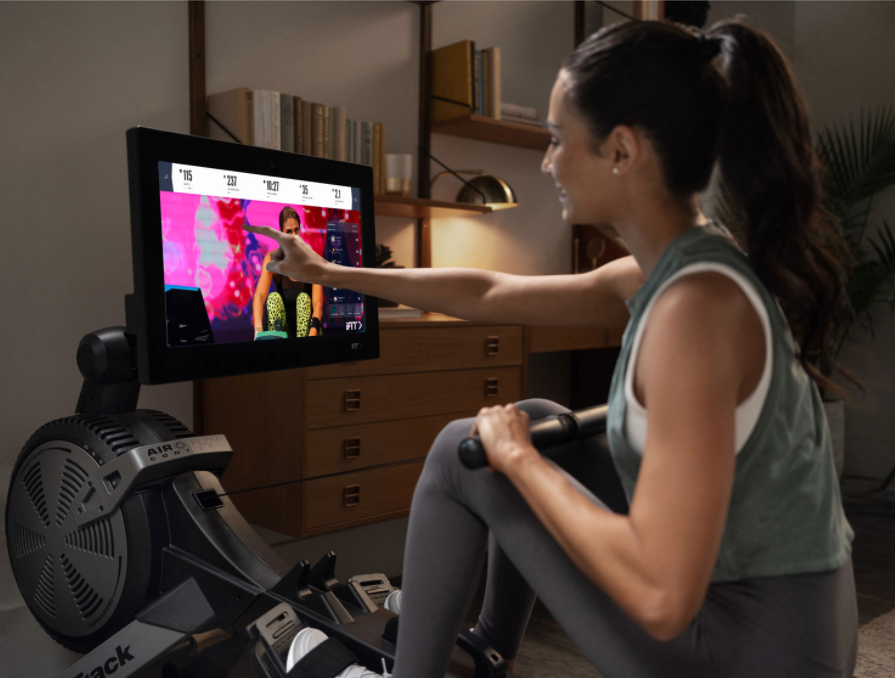
The latest rowing machines boast connected features. At the simplest level, you can connect a mobile device, either wirelessly or via a wired 3.5mm connector, to listen to music through built-in speakers. At the most premium level, you can sync the machine with a streaming workout through a companion app, following along from a built-in screen or your own mounted mobile device. The top brands involved in this space include Hydrow, Echelon, and Nordictrack.
What are the connected features you can get with smart rowing machines?
Live and On-Demand Classes
Access live and on-demand classes using a partner fitness app and mobile device, from brands like Echelon, JRNY, and iFit. This will typically require a subscription of some kind, but many offer a free trial of anywhere from 30 days up to a full year so you can get a feel for it before deciding to commit. The apps and services provide everything from personal training to live and on-demand classes, or even scenic rides if you want to get a virtual feel of rowing on water or viewing a gorgeous outdoor Fall scenic trail. When using your own device, you can also access streaming services to watch TV or videos while you work out, play music, or even video chat with workout buddies to do a virtual workout together.
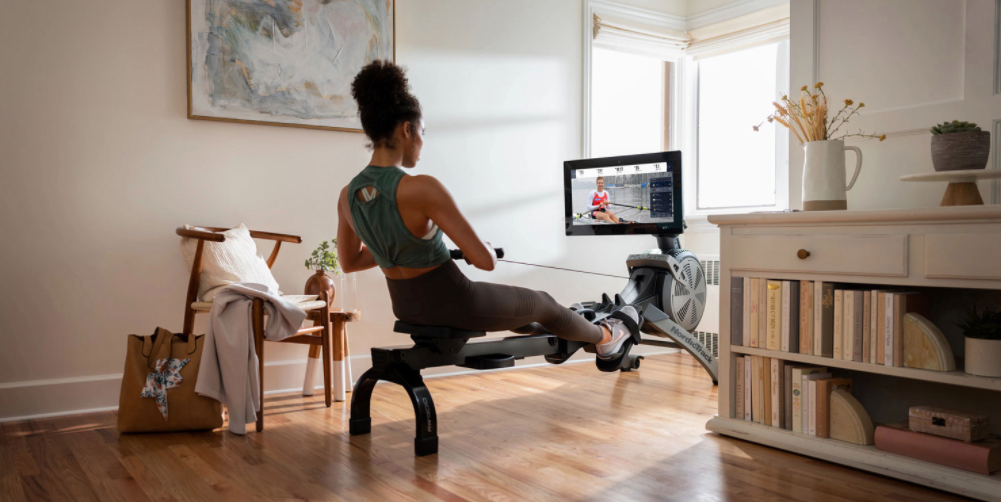
Touchscreen
While some rowing machines have built-in mounts for you to place your personal mobile device, like a smartphone or tablet, some come with touchscreens built right into them, which can range from as small as 10 inches to as large as 22 inches. These can be used to follow along with a trainer and class, scenic route, or enjoy other helpful tips and content. They can also display your workout stats, including speed, calories burned, and more so you get a clear view as you work. Alternatively, with the app and a Wi-Fi-connected big screen TV, you can position the rower in front of the TV and use that as your oversized monitor to follow along with a class.
In addition to live and on-demand content, some rowers with built-in screens offer onboard routines so you can select a favorite workout and access it easily, swapping among different ones as you work towards reaching your fitness goals.
Auxiliary port
On a simpler level, some rowing machines have a built-in aux port for connecting a mobile device and listening to a workout playlist through the built-in speakers. Some might also include Bluetooth for wireless connection to your music source as well as Wi-Fi and Ethernet ports to ensure a stable and reliable wireless connection as you follow along with a class.
What are some related accessories worth getting to use with a rower?
Once you have decided on a rower, it’s time to consider other health and fitness gear and accessories to go with it.
Hand wraps
It’s not a bad idea to grab a set of hand wraps so you can ensure a tight and secure grip on the handlebars as you row. While they aren’t necessary, it’s useful to have if you find that you sweat a lot and your hands get slippery while rowing.
 Mat
Mat
Depending on where you plan to place the rower, you might want to grab a non-slip mat to put underneath it. As noted, a mat on a wood floor will also help reduce noise and vibrations. Mats can also be beneficial for placing beside the machine to use for after and before workout stretching as well as other workouts you might get with a streaming subscription, like pilates and yoga.
Dumbbells/weights
A set of weights is always good to have at your side, which you can use for after-rowing weight training. You can start small with 3, 5, and 8-lb. ones and work your way up as you become more comfortable and build muscle. A rack to accommodate the weights will help keep the room neat and tidy as well.
Fitness recovery
Fitness recovery is an important part of any workout, including rowing. It’s a good idea to have a foam roller on hand to help soothe your aching muscles, from your legs to your core, all of which are worked out on a rowing machine.
Massager
Further to basic fitness recovery devices like foam rollers, you might want to consider investing in a massager, which can do wonders for your muscles and soreness after an intense workout. Many come with adjustable speeds, different modes, and attachments to use on different body parts, from your lower back to your thighs.
Ready to get rowing? Now that you understand how rowing machines workout multiple muscles, not just your arms, and the differences among the various types, as well as the key features to consider, you might be ready to take the plunge and get one for your home.
Take the next step
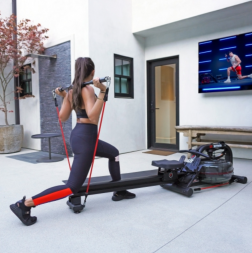
Once you have read through this guide and figured out what type of rowing machine is best for you and what features are dealbreakers, have a look at the wide selection of rowing machines available on bestbuy.ca.



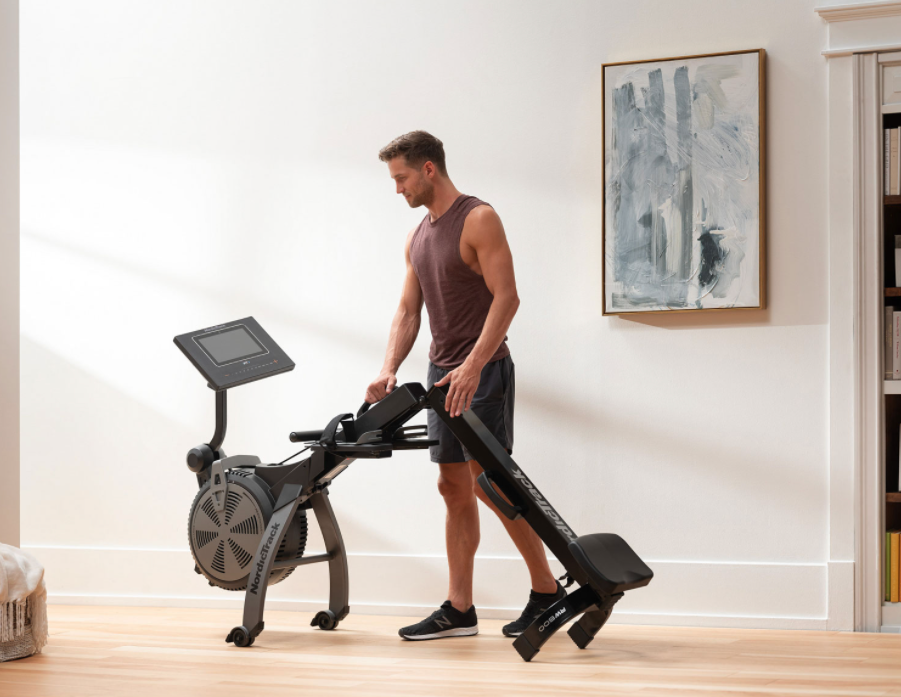
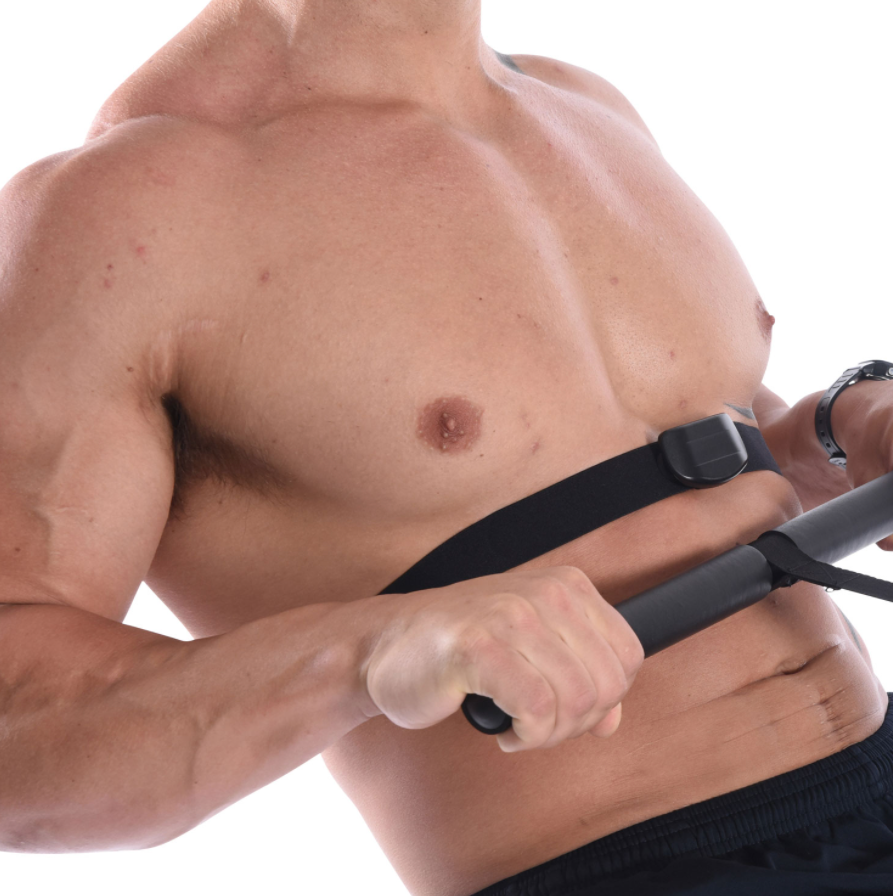
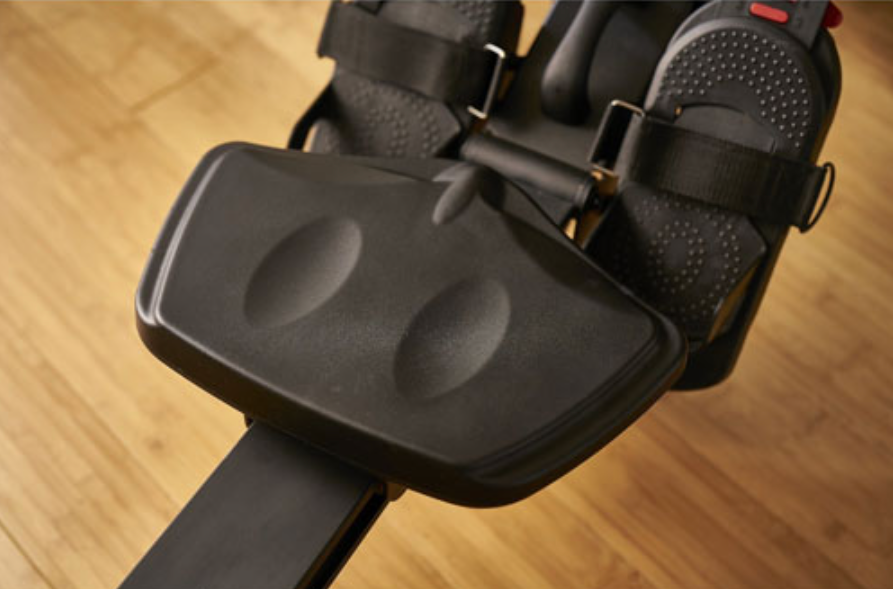
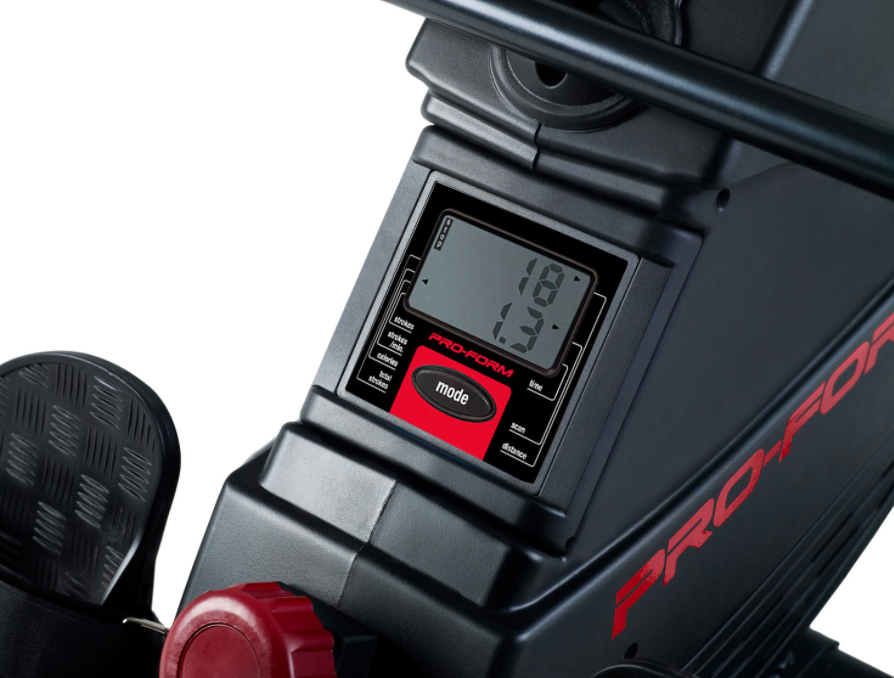
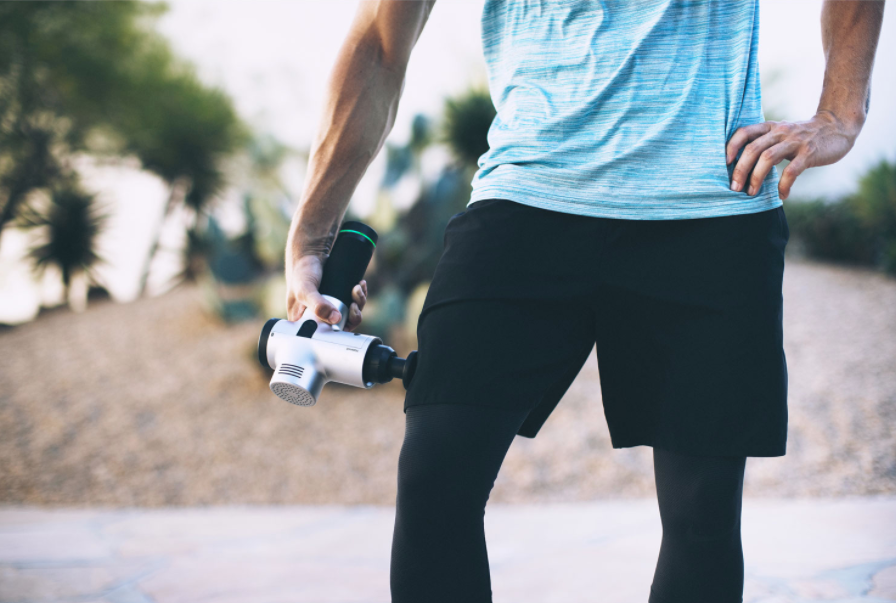





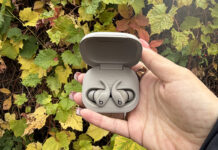
You always want to make sure your rowing machine is backed by some type of warranty and good customer service. Budget rowing machines will all have short warranty periods but at least you want a company with good customer service.
Comments are closed.